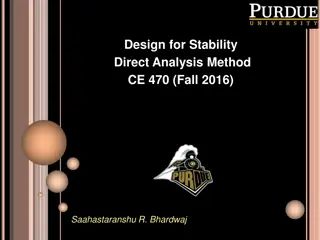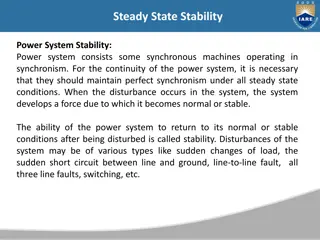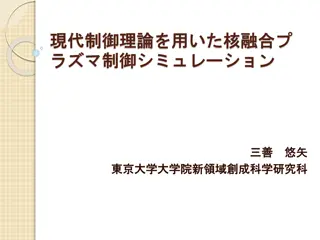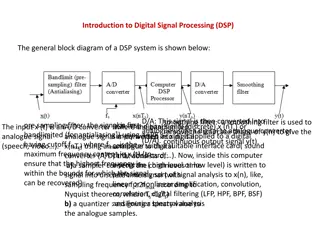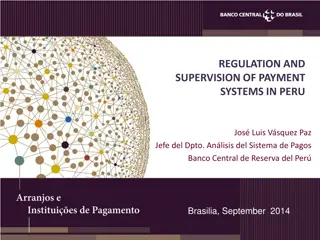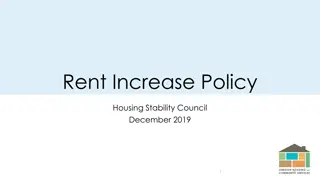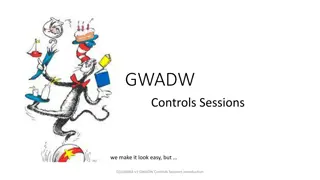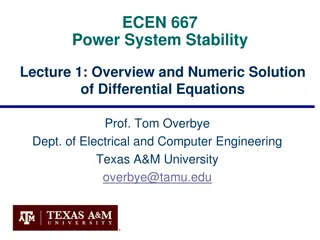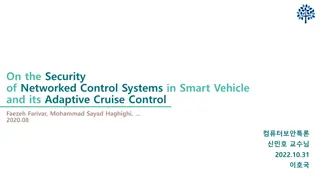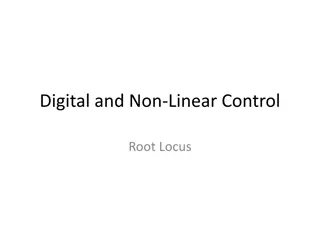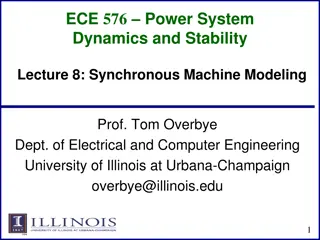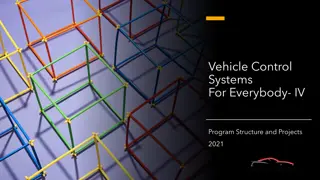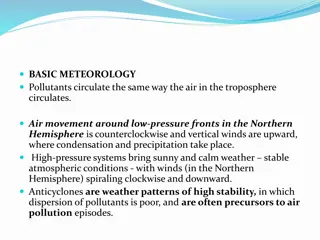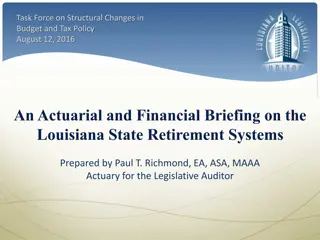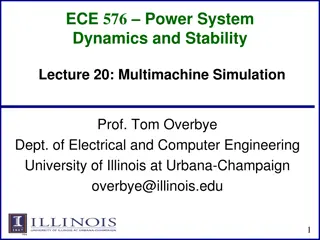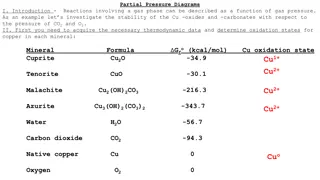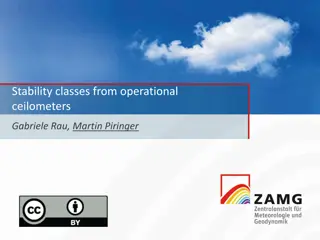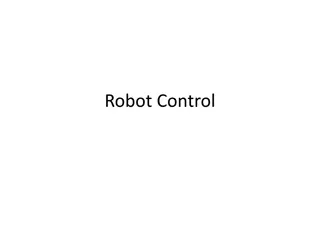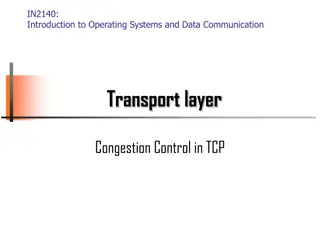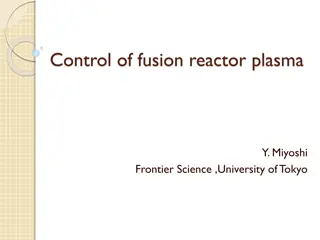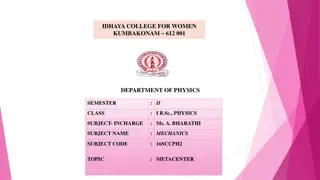Stability Analysis in Control Systems
Stability analysis in control systems is crucial for ensuring the predictability and reliability of system responses. It involves assessing various stability criteria such as Routh Stability Criterion and investigating the behavior of systems under different conditions like bounded inputs. Understanding the concepts of stability, from necessary conditions to types of system responses, is essential for designing robust and effective control systems.
Download Presentation

Please find below an Image/Link to download the presentation.
The content on the website is provided AS IS for your information and personal use only. It may not be sold, licensed, or shared on other websites without obtaining consent from the author. Download presentation by click this link. If you encounter any issues during the download, it is possible that the publisher has removed the file from their server.
E N D
Presentation Transcript
Subject Name: Control Systems Subject Code:10ES43 UNIT 4 STABILITY ANALYSIS Robina Gujral Prepared By: M.Brinda, Sreepriya Kurup, Department: ECE Date:30/3/2015
UNIT 4 STABILITY ANALYSIS
TOPICS Concepts of stability Necessary conditions for stability Routh Stability Criterion Relative stability analysis More on Routh Stability Criterion
The Concept of Stability The concept of stability can be illustrated by a cone placed on a plane horizontal surface. A necessary and sufficient condition for a feedback system to be stable is that all the poles of the system transfer function have negative real parts. A system is considered marginally stable if only certain bounded inputs will result in a bounded output.
STABLESYSTEM Response or output is predictable. A system is said to be stable if for a bounded disturbing input signal, the output vanishes ultimately as t infinity. A system is unstable if for a bounded disturbing input signal the output is of infinite amplitude or oscillatory. For a bounded i/p, it produces unbounded o/p. ii) In the absence of i/p, o/p may not return to zero. It shows certain o/p without i/p. i)
DEFINITIONSOFSTABILITY Bounded Input, Bounded Output (BIBO) Stability: A system is said to be BIBO Stable if i) For Bounded i/p, we have Bounded o/p; o/p Controllable. ii) In the absence of i/p, o/p must tend to zero irrespective of initial conditions. Relaxed system: A System in which initial conditions are zero.
DEFINITIONSOFSTABILITY Critically or Marginally Stable system: for a bounded i/p, o/p oscillates with constant frequency and amplitude. Such oscillations are called Damped or sustained oscillations. Conditionally Stable system: o/p is bounded only for certain condition. If this condition is violated, o/p is unbounded. Stability depends on condition of parameter of the system.
CRITICALLY OR MARGINALLY STABLE SYSTEM
DEFINITIONSOFSTABILITY Zero input stability: If the zero input response of the system subjected to finite initial conditions, reaches to zero as t infinity, then the system is zero input stable. Asymptotic Stability: As magnitude of zero input response reaches zero as t approaches infinity, then zero input stability is also called asymptotic stability. If in the absence of i/p, the o/p tends to zero or to the equilibrium state irrespective of initial conditions.
DEFINITIONSOFSTABILITY Absolutely Stable system: If the system o/p is stable for all variations of its parameters then the system is called absolutely stable system.
TRANSFER FUNCTION When order of the denominator polynomial is greater than the numerator polynomial the transfer function is said to be proper . Otherwise improper 14
STABILITYOF CONTROL SYSTEM Roots of denominator polynomial of a transfer function are called poles . And the roots of numerator polynomials of a transfer function are called zeros . 15
STABILITYOF CONTROL SYSTEM Poles of the system are represented by x and zeros of the system are represented by o . System order is always equal to number of poles of the transfer function. Following transfer function represents nth order plant. 16
STABILITYOF CONTROL SYSTEM Poles is also defined as it is the frequency at which system becomes infinite . Hence the name pole where field is infinite. And zero is the frequency at which system becomes 0. 17
STABILITYOF CONTROL SYSTEM Poles is also defined as it is the frequency at which system becomes infinite . Like a magnetic pole or black hole. 18
STABILITYOF CONTROL SYSTEMS The poles and zeros of the system are plotted in s-plane to check the stability of the system. j LHP RHP Recall = + j s s-plane 19
STABILITYOF CONTROL SYSTEMS If all the poles of the system lie in left half plane the system is said to be Stable. If any of the poles lie in right half plane the system is said to be unstable. If pole(s) lie on imaginary axis the system is said to be marginally stable. j LHP RHP If all the poles s-plane 20
STABILITYOF CONTROL SYSTEMS For example C = , if = = and C = ( ) , G s A B 1 3 10 + As B Then the only pole of the system lie at = pole 3 j LHP RHP X -3 s-plane 21
CONCLUSIONS BASED ON THE LOCATION OF ROOTS OF CHARACTERISTIC EQUATION Roots-LHS negative real parts Response Bounded- BIBO Stable. Roots-RHS Positive real parts Response Unbounded- Unstable. Repeated roots on Imaginary axis Response Unbounded- unstable. Single root at origin Bounded Unstable. Repeated roots at origin Unbounded, unstable. Non repeated roots on imaginary axis or single pole at origin- Limitedly or marginally stable system.
OBSERVATIONS All the co efficients Positive => roots LHS If any co efficient is zero=> roots- Imaginary axis or RHS If any co efficient is negative => atleast one root -RHS
NECESSARYCONDITIONSFORSTABILITY All the co efficients of a characteristic polynomial be positive. If any co efficient is zero or negative, we can immediately say that the system is unstable. But not sufficient condition s3+ s2+2s+8 = (s+2) (s- 0.5 1.93j) (s- 0.5+1.93j) Co efficients positive but roots RHS So s/m Unstable.
ROUTH HURWITZ CRITERION Sufficient conditions for stability. Hurwitz investigated stability interms of determinants. Routh in terms of array formulation. Routh Stability criterion: The necessary and sufficient condition for stability is that all the elements in the first column of the routh array must be positive. If this condition is not met, the system is unstable and the no of sign changes in the elements of the first column of the routh array corresponds to the no of roots of characteristic equation in RHS of s plane.


